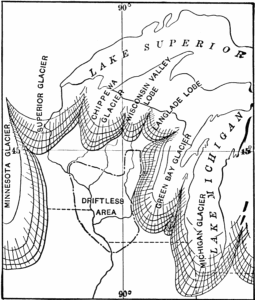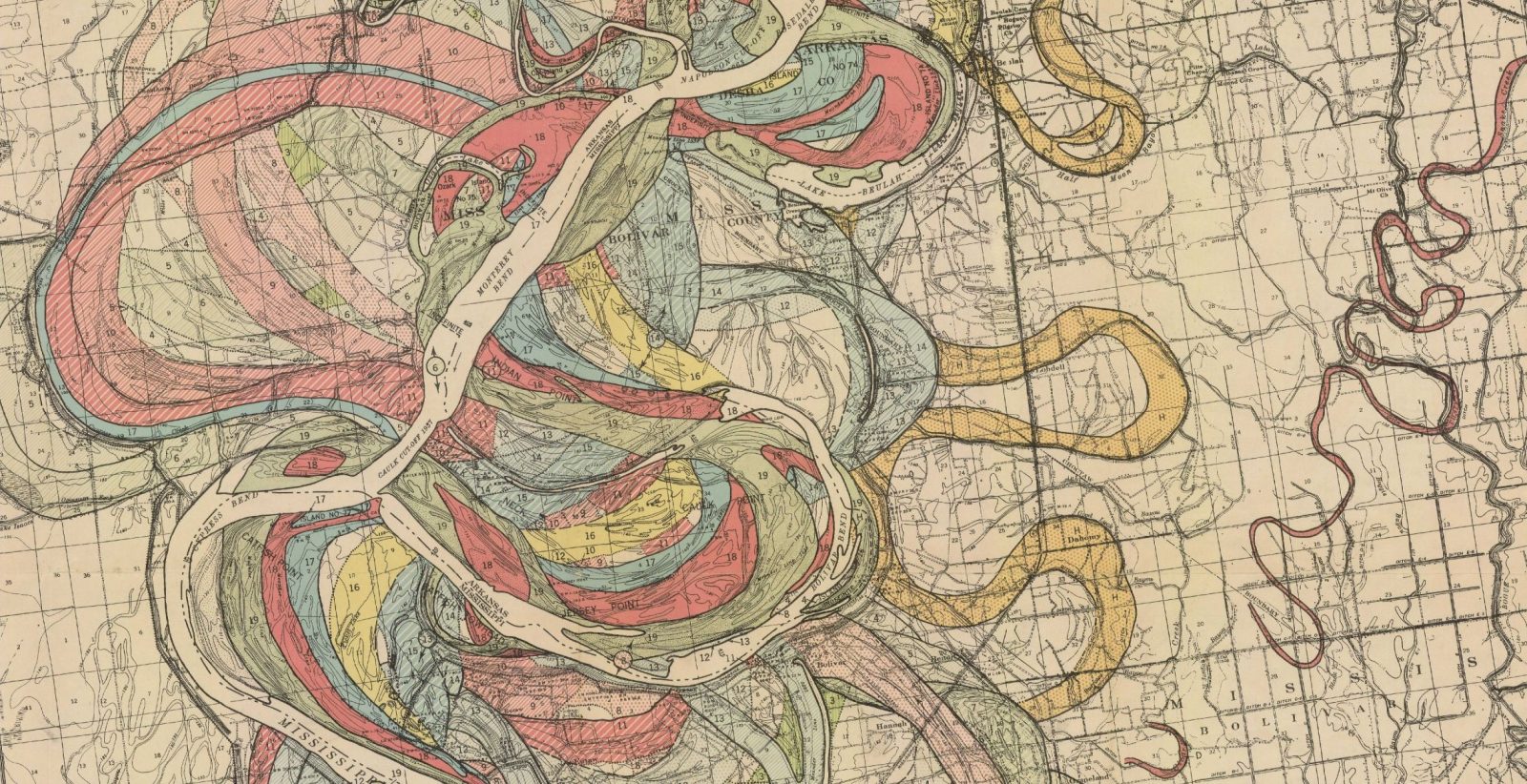How can the planetary Anthropocene be made legible and actionable on a regional level without reducing its inherent complexity? Two Northeastern University professors, Sarah Kanouse (Art + Design) and Nicholas Brown, (Architecture) are answering this question through a series of programs for the research-creation platform Mississippi. An Anthropocene River.
Sponsored by Berlin’s Haus der Kulturen der Welt (HKW), Mississippi. An Anthropocene River explores human impacts on the Mississippi region and makes the historical, social, and ecological transformation of this human-environment system tangible. It is the latest entry in the Anthropocene Curriculum initiative, which has considered the knowledge forms, cosmologies and technospheres of the “age of humankind” in conferences, exhibitions, and publications for several years. Co-sponsored by the Goethe Institute and the Max Planck Institute for the History of Science, the Mississippi River initiative launched in June 2018 with five Field Stations addressing different aspects of this geo-cultural landscape in specific places along the river’s 2,348-mile course.
 Kanouse and Brown co-direct the second field station, entitled Anthropocene Drift, with professor Ryan Griffis at the University of Illinois, Urbana-Champaign. Their work focuses on the role of settler colonialism in producing the Anthropocene in two distinct landscapes: the unglaciated, wooded Driftless region and the agricultural fields of the corn belt, scraped flat by glaciers and denuded of their prairie plants by 150 years of plowing.
Kanouse and Brown co-direct the second field station, entitled Anthropocene Drift, with professor Ryan Griffis at the University of Illinois, Urbana-Champaign. Their work focuses on the role of settler colonialism in producing the Anthropocene in two distinct landscapes: the unglaciated, wooded Driftless region and the agricultural fields of the corn belt, scraped flat by glaciers and denuded of their prairie plants by 150 years of plowing.
“In approaching this landscape, we made two implicit propositions. The first is that what has been called the Anthropocene—the intensification and industrialization of land and resource use that has led us to the brink of ecosystem collapse—is not the inevitable product of humanity writ large but rather the consequence of Euro-American colonialism and the capitalist economic systems it built”, says Kanouse. Professor Brown adds, “We contend that the Anthropocene is both a world geo-historical event and a highly variegated and textured condition that is experienced unevenly and very specifically across space, species, gender, race, and class. Anthropocene Drift asks not when did the (colonial) Anthropocene begin, but, instead, where is it most visible? And where, how, and by whom is it felt most intensely? Part of our interest in this region is pragmatic, in so far as it ties the Anthropocene to colonialism in place(s).”
 Two public projects launch September 25. They represent the culmination of eighteen months of fieldwork for the Anthropocene project and more than a decade of engagement with the territory by Brown, Kanouse, and Griffis in other projects. Over the Levee, Under the Plow is a five-day mobile symposium beginning together regional and international scholars, artists, activists, and Native leaders to consider both the formation of the area’s Anthropocene landscapes and—crucially—ways of working for more just and sustainable alternatives within a damaged world. A flexible gathering space entitled Moraine/Terminal was designed by Kanouse, Griffis, and Brown to accompany the seminar. In addition to holding intimate gatherings and distributing literature, the Terminal also functions as a temporary exhibition space for artist Dylan AT Miner’s This Land Is Always.
Two public projects launch September 25. They represent the culmination of eighteen months of fieldwork for the Anthropocene project and more than a decade of engagement with the territory by Brown, Kanouse, and Griffis in other projects. Over the Levee, Under the Plow is a five-day mobile symposium beginning together regional and international scholars, artists, activists, and Native leaders to consider both the formation of the area’s Anthropocene landscapes and—crucially—ways of working for more just and sustainable alternatives within a damaged world. A flexible gathering space entitled Moraine/Terminal was designed by Kanouse, Griffis, and Brown to accompany the seminar. In addition to holding intimate gatherings and distributing literature, the Terminal also functions as a temporary exhibition space for artist Dylan AT Miner’s This Land Is Always.
In conjunction with the seminar, Brown, Griffis, and Kanouse co-edited and contributed to a series of Field Guides to the Anthropocene Drift. Each short volume in this collection of artful guidebooks responds to a different cultural and/or scientific aspect of the Anthropocene in the region. The goal is to provide readers with the contextual information necessary to become responsible, uninvited guests in the Anthropocene Drift.Beyond Property, a guidebook produced by Sarah Kanouse, explores the evolution of the “ownership model” of property as a technology of the colonial Anthropocene and that considers alternative possibilities of living with and on the land. NickBrown also contributed a field guide in partnership with Rozalinda Borcila and Lance Foster. Entitled Meskonsing-Kanza, the guide considers Indigenous land and the colonial Anthropocene in the territory between what is known today as the Wisconsin and Kansas rivers and the Wisconsin and Kansan glaciations


To learn more about Field Station 2 and the larger Mississippi. An Anthropocene River, visit anthropocene-curriculum.org. This research platform is the shared working tool and digital entryway to the project. As field station programs unfold through the fall, the platform will serve to document and discuss projects and to respond in real-time to the cross-disciplinary discussions engendered through the program. Mississippi: An Anthropocene River concludes in November with a week-long gathering in New Orleans where representatives of all field stations will mingle with other international artists and scholars and chart future steps for their work.


